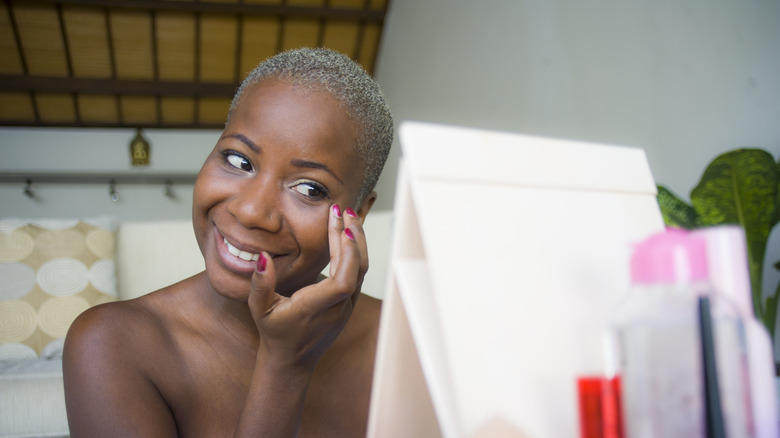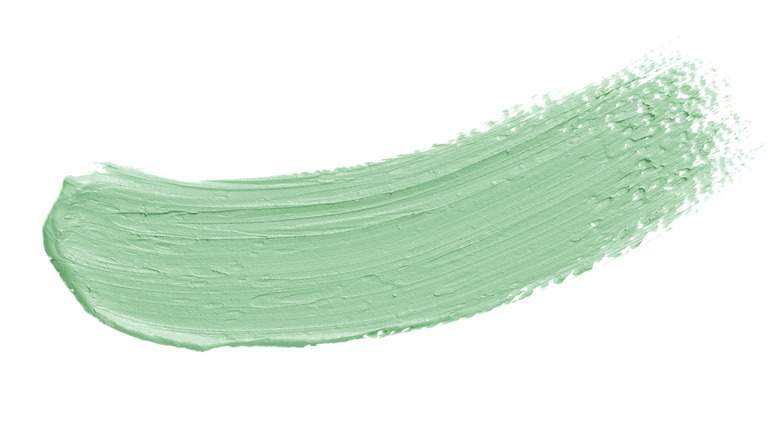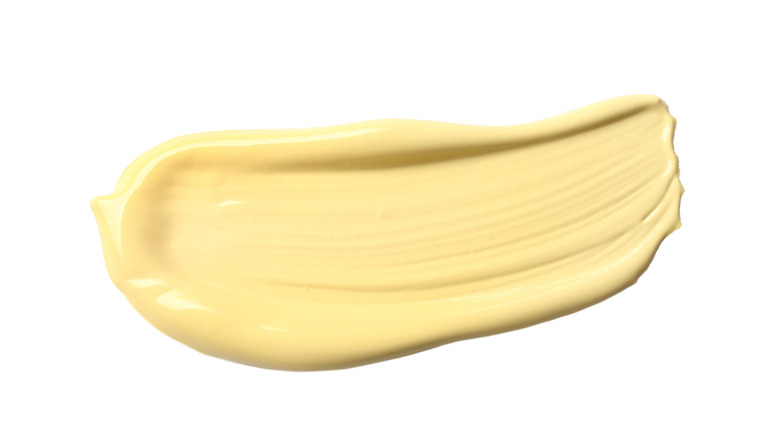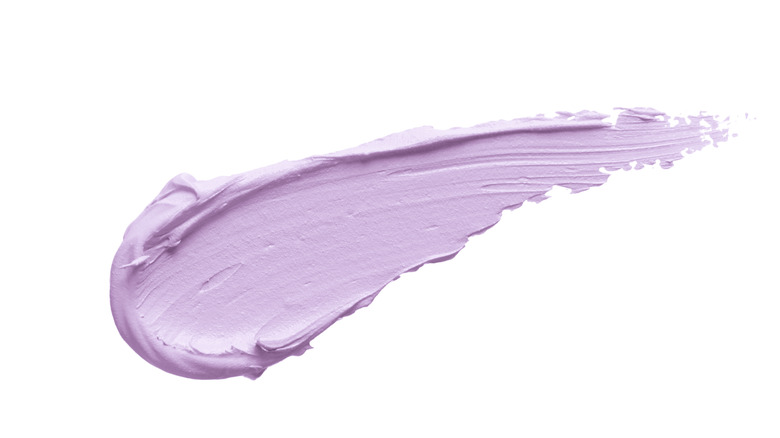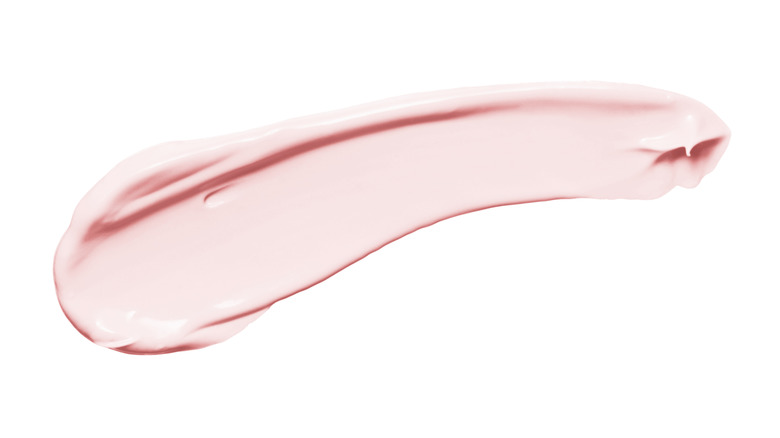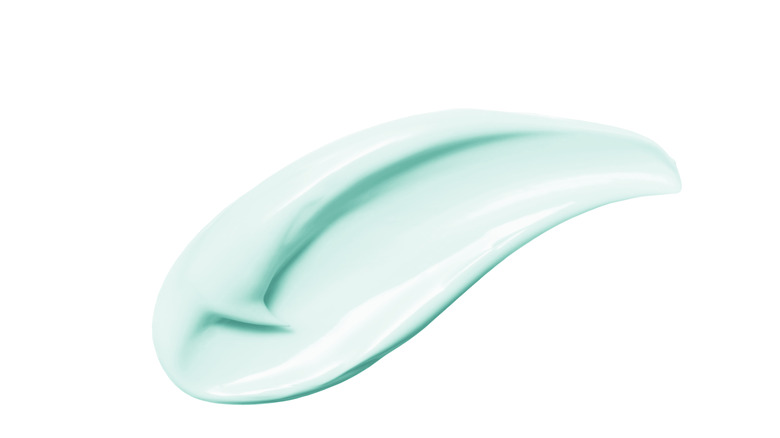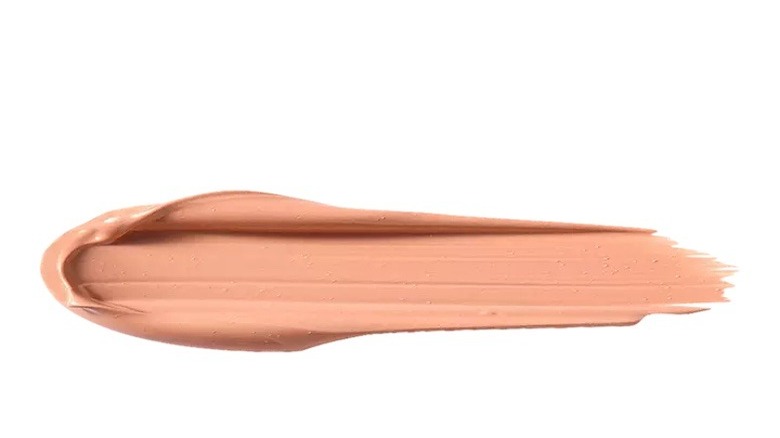Here's How To Choose The Perfect Color-Correcting Primer For You
We may receive a commission on purchases made from links.
Doing your makeup requires a few prepping steps that are crucial to attaining your favorite look. First, you have your skincare routine, where you should finish with an SPF moisturizer. Then, before applying your favorite foundation or skin tint, you must apply a primer. It creates a smooth layer on your skin, allowing makeup to go on evenly without entering your pores. In addition, using a primer makes your makeup last longer and enhances the pigmentation of your products. You can use different primers, such as hydrating, blurring, mattifying, and color-correcting primers. However, if you have relatively even skin, a pore-filling or blurring primer on your natural skin can be all you need instead of a color corrector.
Since everyone has a different skin type, you'll use a primer tailored to your skin, whether dry, oily, or combination. If you have a few other skin issues like hyperpigmentation, dark spots, or acne, then it's best to use color correctors to help give you an even skin tone. In addition to the tone-evening benefits, you use a lesser amount of foundation since the color corrector gives a balanced skin tone. There are six basic color-correcting shades, all used for different purposes. Here's how to choose which color-correcting primer is perfect for you.
Green primer
If you struggle with hyperpigmentation, rosacea, or acne, you tend to have more redness on your face, often in spots such as your cheeks, chin, and forehead. Covering red areas with concealer or foundation can be challenging since it's supposed to be the same color as your skin tone, so if you color match your foundation, you'll still see a tint of redness even through the layers of products. However, you can reduce the redness with a color corrector.
When trying to figure out which color corrector to use, you want to look at the color wheel (via Foreo). You use the opposite color from the color you want to hide. So, if you have redness or inflamed acne, using a green color corrector will diminish the red areas. Green is the opposite of red on the color wheel, so it'll cancel out the redness and give you an even skin tone. You want to make sure not to use too much color correction product to avoid using more concealer or foundation than you need. In addition, apply the green color corrector to the areas that need it the most. If you put the green primer on your normal skin tone, you'll have a green spot on your face. It's essential to apply a small amount of primer and pat it into the face to spread it evenly to other areas.
Yellow primer
Trying to cover up dark circles is stressful, especially if you're hurrying to get out the door. A yellow primer can shorten your makeup routine and allow you to use less concealer on your under eyes. If you have a lighter skin tone and easily notice small blue or purple vessels on your face or around your eyes, a yellow primer will neutralize the colors to create a uniform skin tone. Additionally, if you get any type of cosmetic work done, such as fillers, they can sometimes leave bruises behind, which a yellow primer can help even out.
You can also use a yellow primer on darker skin tones. Since it's a brighter primer, applying it to high points of your face, like your cheekbones or eyebrow arch, will highlight those places. Again, remember to use just a small amount to prevent using too much additional product since it'll peek through. Yet, if you like the look of the highlight, you can add a powder highlight over the primer to enhance the shine.
Lilac primer
For skin that has yellow undertones or sallow tones, a lilac or lavender color corrector will help brighten any yellow spots. It's beneficial for fair to medium skin tones that want more of an illuminating appearance that hides any warmer or darker imperfections. You can also apply it as a spot treatment or in larger areas if you have more than a few spots. The best way to achieve coverage is by using the primer after your base makeup. At the same time, most color correctors are applied before concealer and foundation; adding the lilac or lavender primer after will give you an iridescent touch.
If you're hesitant about how the application will look after you've put on your base, you can apply the lilac primer before your base. On the other hand, test out the color corrector on a small area once you put your foundation on to give you an idea of what it will look like. Start with a pea-sized drop on one area where you have a yellow undertone. The lilac primer should softly blend with the foundation, appearing as a purple highlight. Your skin will glow brighter after you finish applying all your products.
Pink primer
Sleeping too much or not enough can make you tired and lack energy, which can be shown on your face. You've probably tried dunking your face in ice water to wake up, drinking a lot of coffee, or using under-eye masks, but sometimes that's not enough. Whether you get dark circles from lack of sleep or they're genetic, it can be hard to cover up with only concealer. Using a pink color corrector helps cover up any dark circles and illuminates a tired face.
On the color wheel, pink is across from blue, green, and purple, so it'll work best to cover dark circles. You can apply the pink primer to your under eyes before putting on concealer, or use it on your under eyes and lids before concealer and eyeshadow. You won't be able to see dark pigmentation through lighter eyeshadows, and you can experiment with multiple color palettes without worrying about your dark circles showing.
Blue primer
Blue sits across orange on the color wheel, which will help neutralize orange undertones on darker skin tones. The blue primer will brighten and even out the color if you have orange hues on your under eyes. In addition, it helps tone down the appearance of dark spots and hyperpigmentation on fair skin. For olive skin tones with yellow sallowness, the blue color corrector works perfectly to illuminate the skin and hide any dullness.
Since the blue primer is darker than the other primers, you want to be careful with how much you put on your face. Apply it to the areas that need it the most if you have a few places with dark spots, or leave it just for the under eyes. However, if you have all three, there are blue primer drops you can add to your moisturizer to get an even and thin layer on your face. If you use a regular blue primer, place a small amount on the areas that need it and pat it on the skin. When you put on your foundation, you'll want to dab it in with a beauty blender instead of swiping it with a brush.
Peach or apricot primer
Being out in the sun for a few hours gives you the Vitamin D you need, but it can also give you a few sunspots you probably don't want. A peach or apricot primer can help provide a clear look by covering dark or aging spots on a fair skin tone. If you have a darker skin tone, you can use a darker apricot or orange color corrector to cover dark spots from the sun. In addition, the deeper orange or apricot primer will hide any ashy areas and give them a brighter appearance.
A peach primer can also lighten and cover up dark circles since it sits across blue and purple on the color wheel. The application is the same as the pink and yellow primers; add a pea-sized amount to dark spots on your face. You can build the primer if you need more coverage, but ensure it stays as an even layer with the rest of your skin. You don't want to add extra concealer or foundation to try to hide the peachy tone.
